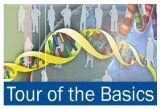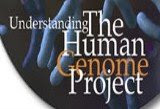
Image Credit: Forbes.com
>> Stem Cells Work Medical Magic
:: Make Better Antidepressants
Turning on stem cells in the brain could create the next generation of antidepressants. The idea that drugs like Prozac and Zoloft work by boosting the chemical serotonin is so widely known that drug companies use it in their ads. But the drugs' most important function may be to spur the growth of new neurons in the brain--blocking the growth of new brain cells in mice renders Prozac and other antidepressants ineffective. BrainCells Inc. is working on creating mood-elevating drugs that work by causing brain stem cells to grow.
:: Augment Breasts
Cytori Therapeutics, a tiny biotech firm traded on the Nasdaq, has developed a medical device that spots stem cells in fat. The company hopes these might heal lots of different body parts, including the heart. But the first use is breast reconstruction after a partial mastectomy. The idea is that the fat stem cells can be made to regrow tissue in ways fat cells can't. Right now, the device is marketed in Europe. Cytori is conducting clinical trials to test it for breast augmentation that could lead to U.S. approval.
:: Alleviate Down Syndrome
Down syndrome occurs when a person has an extra copy of his or her 21st chromosome. But what exactly goes wrong? A potential culprit is a misfire among a group of signaling proteins that tell stem cells in an embryo how to create a brain. Stanford's Philip Beachy already knew "hedgehog" misfires (the so-called hedgehog genes are essential to embryonic development) could lead to sheep with one eye or with underdeveloped brains. Down syndrome also seems to cause a hedgehog misfire. Fate Therapeutics, which Beachy co-founded, is looking into whether a drug that boosts hedgehog-gene activity could limit the damage from Down Syndrome if it were given to newborns.
:: Treat Cancer
It may be aberrant stem cells in tumors are what make cancer so malignant. In 2003, Stanford oncologist Michael Clarke shocked other scientists by isolating breast cancer stem cells. They formed only 5% of the tumor, but just a couple hundred of them could cause a new tumor in a mouse. Implanting tens of thousands of other breast cancer cells did nothing. The upshot is that the problem with current cancer treatments may be that they kill regular tumor cells but don't kill the stem cells that allow tumors to keep growing. GlaxoSmithKline will pay OncoMed Pharmaceuticals, a company Clarke founded, up to $1.4 billion for developing drugs that kill cancer stem cells.
:: Slow Parkinson's Disease
It is only because of the existence of human embryonic stem cells that researchers can directly study the neurons dying off in Parkinson's. It could be that, in 20 years, almost every medical researcher is going to use embryonic stem cells as basic tools.
Another approach comes from the laboratory of Wisconsin researcher Clive Svendsen. He is creating genetically engineered fetal cells that would act like drug factories in the brain, churning out a growth factor that could prevent brain cells from dying.
:: Make Alzheimer's Drugs
Last year (2005), scientists in the U.S. and Japan discovered a way to create cells that act like embryonic stem cells but without ever using embryos--instead, they use genetically modified viruses to transform adult human cells into embryolike stem cells by activating only four genes.
University of California, San Diego, researcher Lawrence Goldstein is using these so-called "induced pluripotent" stem cells to make neurons that are "genetically identical" to those of Alzheimer's patients. He is collecting 50 skin samples from Alzheimer's patients in order to hunt for new drugs.
:: Create Drugs For Lou Gehrig's Disease
New technologies that create embryo-like stem cells without embryos could be a boon for drug research. Case in point: amyotrophic lateral sclerosis (ALS), better known as Lou Gehrig's disease, which is caused by the sudden death of motor neurons in middle age. First, scientists want to find toxins that kill neurons destined to get ALS, but leave normal neurons alive. Then they hope to find potential drugs that keep the ALS neurons from dying. Such medicines might prove to be effective treatments for the disease.
:: Cure Type 1 Diabetes
Patients with Type 1 diabetes must take four or more shots of insulin a day because their insulin-producing cells have been killed by a haywire immune system.
Novocell, a San Diego biotech, plans to turn embryonic stem cells into these missing insulin producers and inject them into the bodies of diabetics to put their disease into remission. Medical giants J&J and Becton Dickinson are backing the firm. The technique has been successful in mice, but it will take at least three years before Novocell's treatment is ready to be tested in humans.
:: Treat Tay-Sachs Disease
Tay-Sachs disease is a fatal genetic disorder in which a fatty substance builds up in the cells of the brain, eventually killing them.
The problem is that key enzymes that break this fatty substance down are missing. Evan Snyder at the Burnham Institute for Medical Research in La Jolla, Calif., hopes healthy stem cells can treat the disease by replacing these missing enzymes. When his team implanted stem cells into mice with a disease similar to Tay-Sachs, the animals lived at least 70% longer. A human trial could begin next year.
---------------------------------------------------------------------
Source:
http://www.forbes.com/2008/05/28/stem-cells-biz-healthcare-cx_mh_0528medtech_pathschart.html
.jpg)
.jpg)
.jpg)

.jpg)
.jpg)
No comments:
Post a Comment